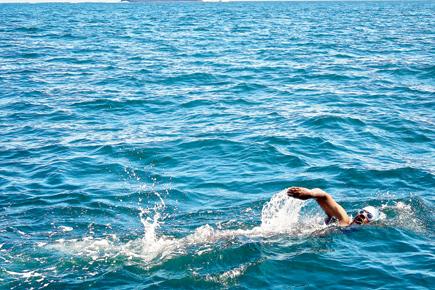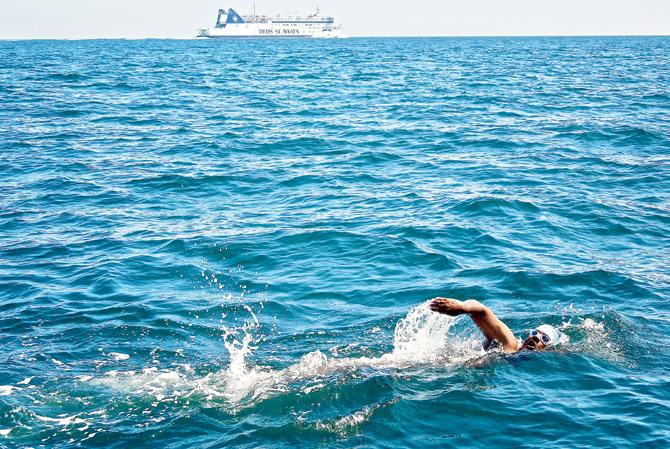A team of six Indian swimmers are set for a world record in a two-way medley relay swim across the English Channel

ADVERTISEMENT
The Sea Hawks are no strangers to endurance-testing expeditions. This year, in February, the team of six Indian open-water swimmers accomplished the world record for the longest relay swim. While covering a distance of over 433 km from Goa to Mumbai in five days, the team fought changing tides 26 times, bad weather conditions, winds, contaminated waters, sea traffic (mainly cargo ships, ferries and fishing boats) and extreme exhaustion. However, this experience might just pale in comparison to their next thrilling adventure.

Led by Wing Commander Paramvir Singh, the group comprising Air Force personnel Gulupilli Narahari, Srikaanth Viswanathan and civilian teenager Manav Mehta, is set to create another World Record for a two-way medley relay swim in the English Channel. Next week, the quartet will swim from UK to France and back, in a continuous sequence. "There has never been a successful two-way medley relay swim in the English Channel till date," says Singh over the phone from London where he is prepping for the swim.
A medley relay open-water sea swim is considered the most challenging among endurance swims, and the success rate is a bare minimum. The records maintained by the Channel Swimming Association (CSA) of all successful swims in the English Channel since 1875, show a total of just over 1,000 successful solo swims, less than 800 relays and only one successful medley relay swim (one way) in the last 140 years.

Paramvir Singh. Wing Commander
A medley relay swim is an attempt by a group of swimmers to cover a said distance in a rotational sequence, with each using all four strokes in regular sequence. Each swimmer is assigned one of the four strokes (backstroke, breaststroke, butterfly and freestyle, in that order) and swims their turn in that stroke only. Singh will be doing the breast stroke, which he says is one of the toughest strokes to pull off in cold water. "Here, you’re facing the tide, so you end up gulping a lot of water. Your knees tend to give up. Moreover, the freezing water ends up making you swim slower than you need to, and can also put excessive stress on the joints," says Singh, who swam through the Ganga last year, covering 2,800 km in 35 days to promote the Swachh Bharat campaign.
What makes this swim a perennial challenge for swimmers are the powerful tides in the English Channel which change every six hours, strong undercurrents and the heavy presence of dangerous jellyfish like the toxic blue box variety. "The swimmers will experience phases of extreme exhaustion, seasickness, cramps and the ever-present danger of hypothermia due to cold water. There’s also the occasional shark all along this route," adds the 40-year-old.
While Singh, Viswanathan and Narahari are around the same age, Mehta is a 16-year-old city lad, whose first attempt at long distance swimming was from Uran to the Gateway of India in 2008 when he was just seven years old. "He is one of our strongest swimmers, who will be doing the backstroke. It’s a tough stroke but Manav is good at it," says Singh, who ensures his team swims for at least five hours a day.
Singh says the rules for the swim have remained the same since Captain Matthew Webb swam the English Channel in a pair of swimming trunks and goggles in 1875.
"The Brits have already started cheering us. They have huge for respect for people who want to swim the English Channel, so much so that if you go to a shop and happen to tell them about your attempt, they’ll offer you a discount," he jokes.
 Subscribe today by clicking the link and stay updated with the latest news!" Click here!
Subscribe today by clicking the link and stay updated with the latest news!" Click here!







